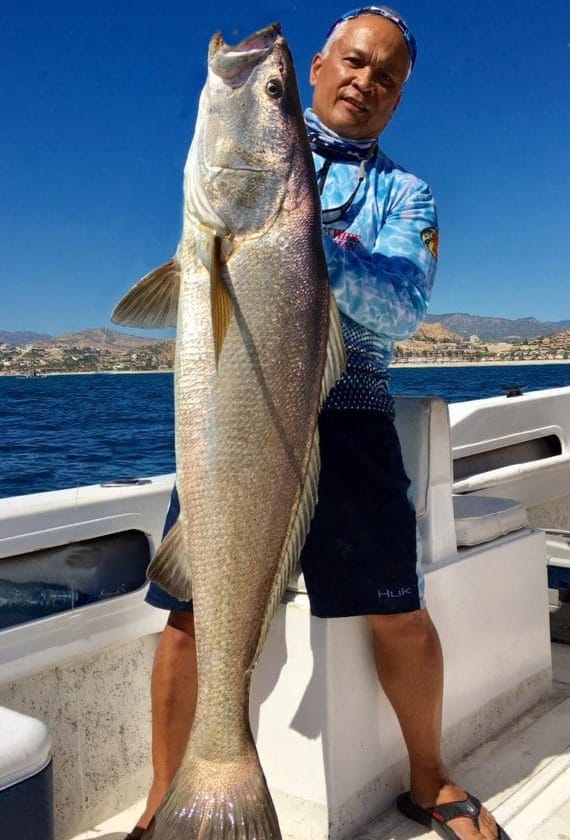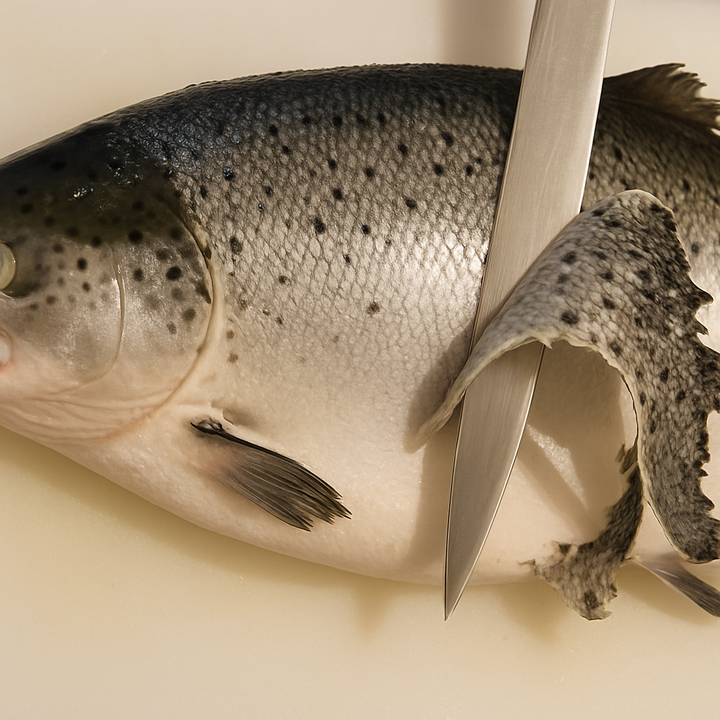Totoaba: Most Valuable Fish Bladder
The critically endangered totoaba fish carries a highly coveted treasure within its body: its swim bladder. Cultural beliefs, status symbolism, and supposed health benefits have driven this "cocaine of the sea" to the brink of extinction.

In the murky waters of the Gulf of California swims a creature whose internal organ has become so valuable that it has earned the ominous nickname "cocaine of the sea."
The totoaba (Totoaba macdonaldi), a critically endangered fish native to Mexican waters, harbors within its body a treasure that can fetch up to $47,000 per kilogram on black markets: its swim bladder, or fish maw.
But what makes this particular organ so extraordinarily valuable, and why has it pushed this majestic fish to the brink of extinction?
A Giant Under Threat
The totoaba is an impressive specimen—the largest member of the drum family (Sciaenidae), capable of growing over six feet long and weighing up to 220 pounds.
With a lifespan that can exceed 25 years, these giants once thrived throughout the Sea of Cortez.
Today, however, their population has plummeted so dramatically that they're listed as critically endangered by the International Union for Conservation of Nature (IUCN).
What makes this decline particularly tragic is that the fish aren't even hunted for their meat.
Instead, poachers prize just one internal organ—the swim bladder—discarding the rest of the fish after extraction. This organ, which helps the fish maintain buoyancy in the water, has become one of the most expensive animal products on Earth.
The Anatomy of Desire: What Makes Totoaba Fish Maw Special?
The swim bladder of the totoaba possesses several characteristics that have elevated it to legendary status in certain markets:
Rich Collagen Content: The organ contains high concentrations of collagen, a protein prized for its supposed health benefits and unique texture when prepared in traditional dishes. This collagen creates a distinctive gelatinous consistency highly valued in Chinese cuisine.
Size and Quality: Totoaba swim bladders are particularly large and have specific textural properties that set them apart from those of other fish species. Their substantial size—sometimes reaching 12 inches in length—means each bladder yields a significant amount of the prized material.
Rarity and Exclusivity: As totoaba populations have dwindled, their swim bladders have become increasingly scarce, driving up prices and creating a feedback loop of greater demand and further overfishing.
But the true value of these swim bladders isn't found in any scientific analysis of their composition—it lies in the cultural significance and beliefs surrounding them.
Culture, Medicine, and Status: The Drivers of Demand
In Chinese cuisine and traditional medicine, fish maw has been valued for centuries. However, the totoaba swim bladder has gained particular prominence for several interconnected reasons:
Culinary Tradition: Fish maw is a staple ingredient in traditional Chinese soups and stews, prized for its unique texture that absorbs the flavors of the broth while adding a distinctive mouthfeel. Totoaba swim bladders are especially sought after for their exceptional quality and similarity to those of the nearly extinct Chinese bahaba (Bahaba taipingensis), which was once the preferred source of fish maw.
Traditional Medicine Beliefs: Despite lacking scientific validation, totoaba swim bladders are believed to offer numerous health benefits in traditional Chinese medicine. They're thought to boost fertility, improve blood circulation, enhance skin vitality, strengthen the immune system, and even promote longevity. The high collagen content is particularly valued for its supposed benefits for skin elasticity and joint health.
Symbol of Wealth and Status: Perhaps most significantly, serving dishes containing totoaba fish maw has become a powerful status symbol among affluent consumers. In a culture where conspicuous consumption can signify social standing, the ability to offer guests one of the world's most expensive ingredients makes a clear statement about one's wealth and importance. This cultural dynamic is so pronounced that in Chinese markets, the totoaba swim bladder is often called "jin qian min" or "money maw," reflecting its status as both a luxury food and a speculative investment.
The Illicit Trade: Why "Cocaine of the Sea" Is More Than a Metaphor
The nickname "cocaine of the sea" isn't merely poetic—it reflects striking parallels between the illegal trade in totoaba swim bladders and the global narcotics trade:
Astronomical Black Market Value: A single large totoaba swim bladder can sell for approximately $5,000 in the United States and more than $10,000 in Asian markets. This extraordinary value—weight for weight comparable to some illicit drugs—creates powerful economic incentives for poaching.
Organized Crime Networks: The lucrative nature of the trade has attracted sophisticated criminal organizations. These networks employ local fishermen, smuggle the bladders across international borders, and distribute them through black market channels, mirroring the structure of drug trafficking operations.
Severe Ecological Consequences: Just as cocaine production drives deforestation in South America, the hunt for totoaba is devastating marine ecosystems. Fishermen use large-mesh gillnets that not only catch totoaba but also ensnare other marine species, most notably the vaquita porpoise (Phocoena sinus), which has been pushed to the very edge of extinction with fewer than 10 individuals remaining in the wild.
Law Enforcement Challenges: Despite protection under the U.S. Endangered Species Act since 1979 and global trade bans under CITES (Convention on International Trade in Endangered Species of Wild Fauna and Flora), illegal fishing continues. Law enforcement agencies face significant challenges in policing vast marine areas and intercepting smuggled shipments.
Economic Realities: Following the Money
The economics of the totoaba trade reveal why conservation efforts face such steep challenges.
Local fishermen in economically depressed regions of Mexico can receive up to $8,500 per kilogram for totoaba swim bladders—an astronomical sum in communities where legitimate fishing might yield just a fraction of that amount.
As the bladders move through the supply chain, their value increases exponentially.
By the time they reach retail markets in China or Hong Kong, prices can reach $25,000 for a 500-gram bladder. In 2018, Chinese customs seized 444 kilograms of totoaba swim bladders estimated to be worth $26 million and arrested 16 individuals linked to trafficking syndicates.
Conservation Efforts: Can the Totoaba Be Saved?
The fight to save the totoaba and the ecosystems it inhabits involves multiple approaches:
Enforcement: Mexican and U.S. authorities have increased patrols in critical habitats and cracked down on smuggling operations. In 2023, authorities in Arizona seized totoaba swim bladders worth $2.7 million in a single operation.
Aquaculture: Promising initiatives aim to breed totoaba in captivity, potentially satisfying market demand without further depleting wild populations. However, challenges remain in scaling these operations and ensuring they truly reduce pressure on wild stocks rather than simply expanding the market.
Scientific Innovation: Researchers have developed new methods for identifying totoaba swim bladders using real-time fluorescence-based recombinase-aid amplification (RF-RAA), making it easier to detect illegal products in markets and shipments.
Education and Awareness: Conservation organizations are working to inform consumers about the ecological consequences of the trade and the lack of scientific evidence for the claimed health benefits of totoaba swim bladders.
The story of the totoaba illustrates how cultural beliefs, economic incentives, and ecological realities can collide with devastating consequences.
As this magnificent fish teeters on the edge of extinction, its plight raises profound questions about how we value and protect the natural world.
The answer will determine whether future generations will know the totoaba as a living species or merely as a cautionary tale of extinction driven by human desire.


